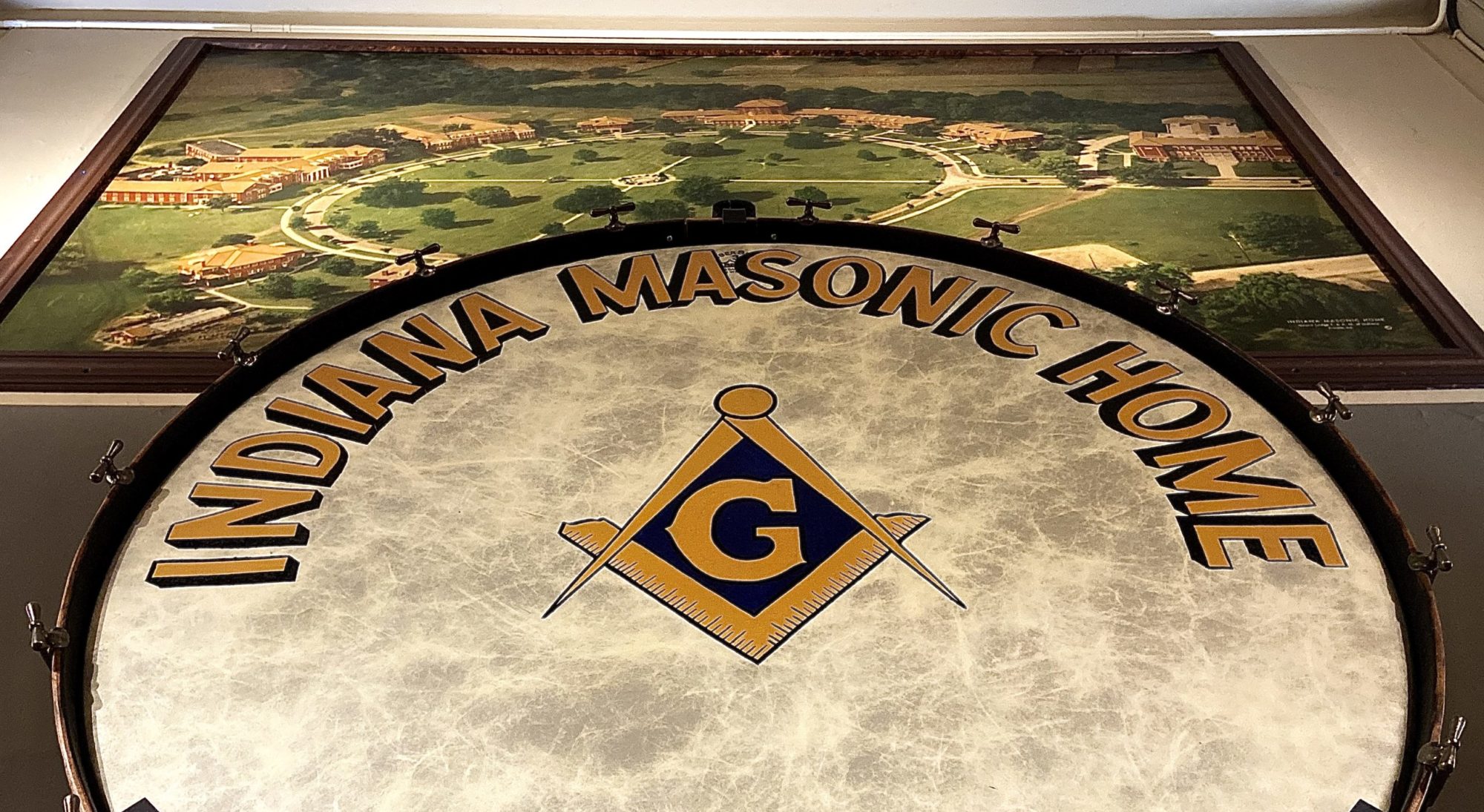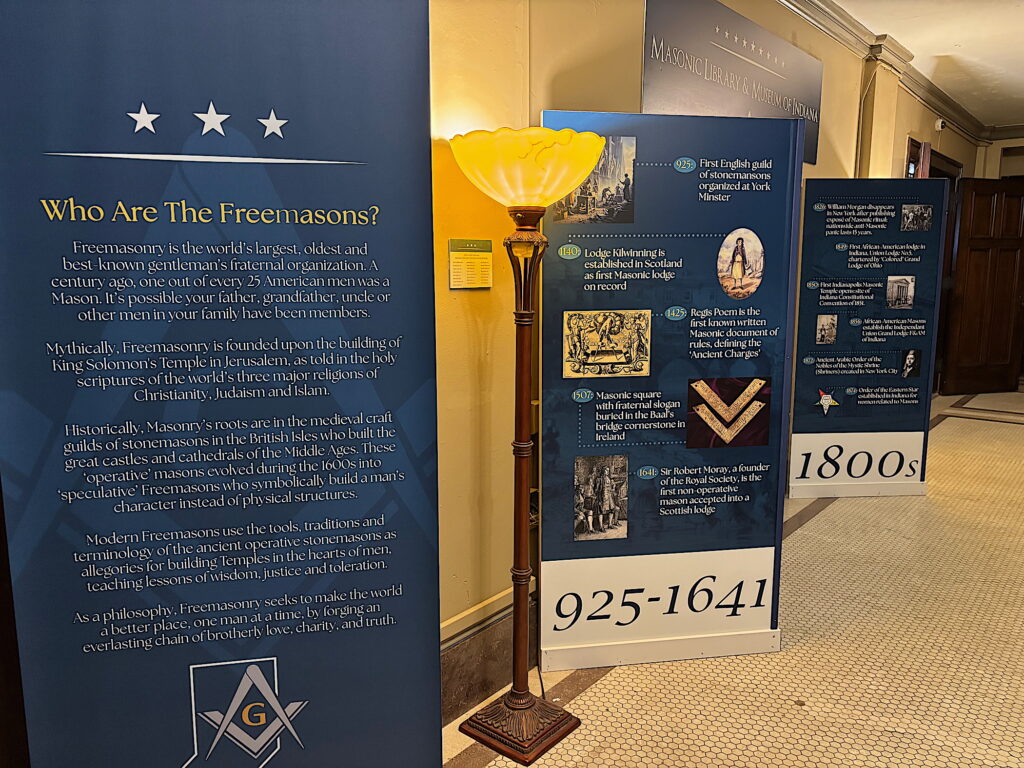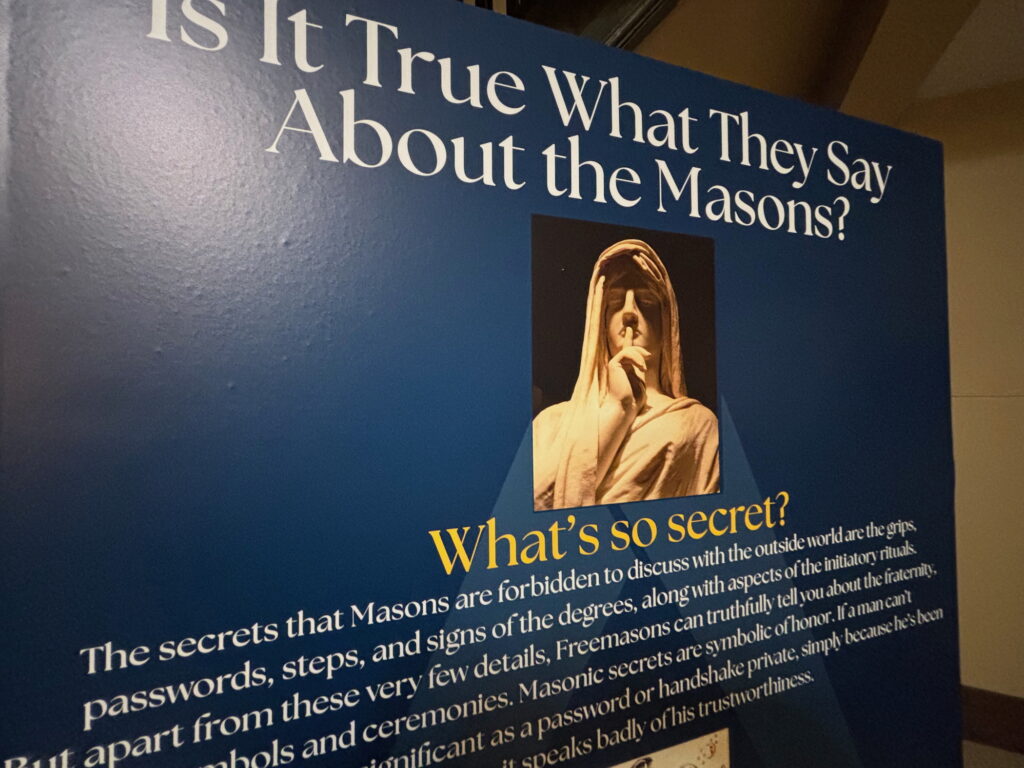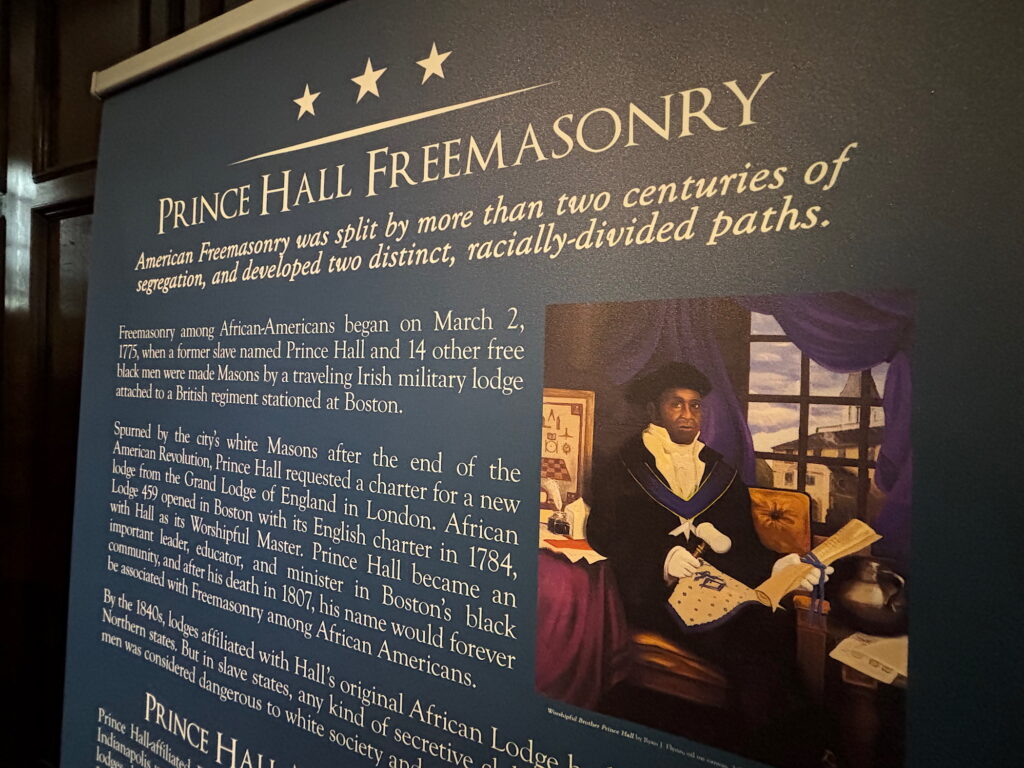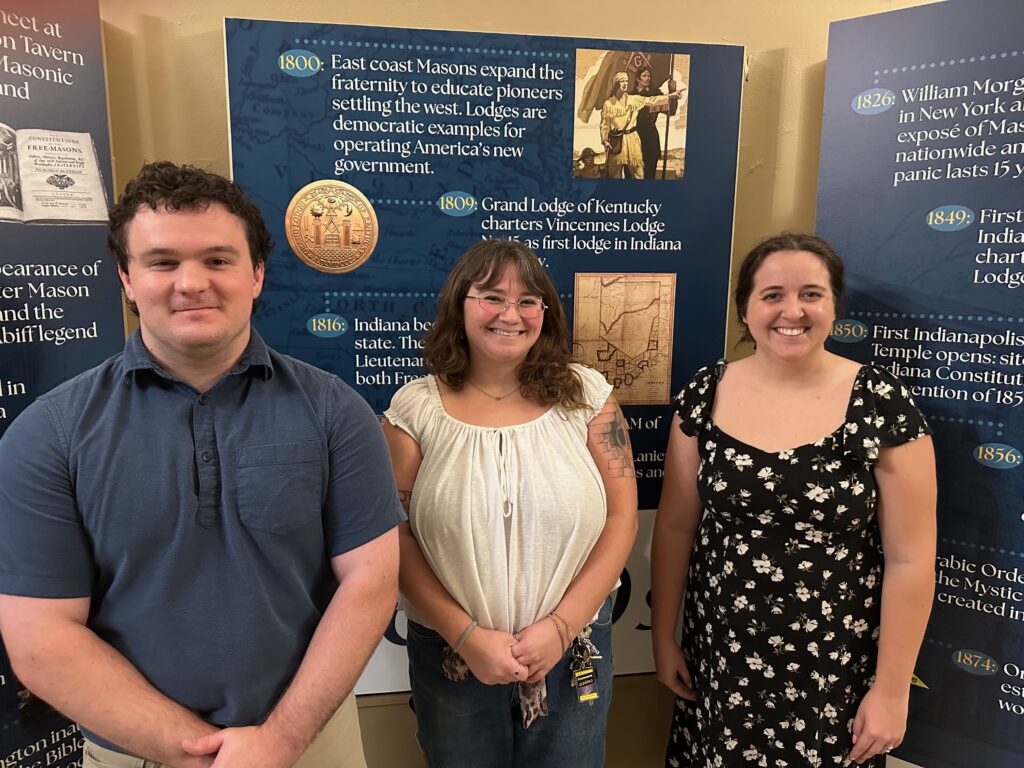
The Masonic Library & Museum of Indiana has been blessed this year with a group of three interns from the Indiana University Museum Studies Master’s Degree Program. Nathan Dowell, Lauren Freije, and Taylor Pastor began their Work Study duties in early August. For the Fall 2025 semester, the Museum is open and staffed on Tuesdays, Wednesdays and Thursdays from 10AM until 4PM, at least through the beginning of next year.
Nathan kicked off his time by putting together a display of lodge and grand lodge lapel pins from all over the country using a combination of donated pin collections. He is currently developing a new exhibit of fraternal ceremonial swords from the Knights Templar.
After several false starts by others over the years, Lauren and Taylor have taken on the herculean task of cataloging our more than 4,000 books. We’re extremely pleased to report that they are making rapid progress in just the first few weeks of work.
Library Cataloging Project
Masonry is a funny subject when it comes to the Dewey Decimal System used by almost all general-interest and academic libraries. Our fraternity with its thousands of books available barely occupies two-tenths of a decimal point in Dewey’s classification. Frustrated Masonic librarians over the decades sought to solve this problem by creating their own numbering system that had plenty of subject categories to handle nearly every niche of interests within our fraternity. (Unique library numbering systems aren’t new – specialty medical libraries have the same problem.) Unfortunately, three different sets of frustrated Masonic librarians in the U.S. all approached the subject by independently creating three completely different systems that can’t talk to each other. The one we adopted decades ago is the Steele-Davis-Tatsch numbering system, which is also used by the libraries at the grand lodges of Massachusetts and Missouri, who have shared their catalogs with us.
This laborious project involves looking at each volume, copying the publication details and descriptions from one of several online resources or our antiquated card catalog, discovering whether a prior Masonic library has issued a call number for that book in the Steele-Davis-Tatsch system, printing a new label with that number, and affixing it to the book. Now, repeat this 4,000 times and enter it all in our Past Perfect catalog system.
Ultimately, the catalog will be made available online so researchers can search our online database and discover everything we have available.
